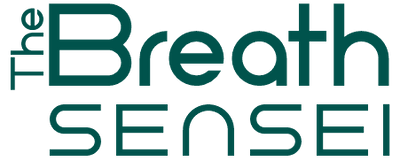It appears that your cart is currently empty
What is Pursed-Lip Breathing?
0 comments
What’s pursed-lip breathing?
Pursed lip breathing is a breathing technique meant to increase the effectiveness of your breaths by slowing them down and making them more deliberate. After inhaling, you accomplish this by pouting your lips and exhaling through them slowly, deliberately, and frequently to a count.
When you breathe through your pursed lips, you have better control over your breathing, which is crucial for patients with lung diseases like COPD.
How does pursed lip breathing work?
Pursed lip breathing should be practiced until it becomes second nature. It’s most effective when you’re focused or relaxed. Here’s how to practice.
- Sit with your back straight or lie down. Relax your shoulders as much as possible.
- Inhale through your nose for two seconds, feeling the air move into your abdomen. Try to fill your abdomen with air instead of just your lungs.
- Purse your lips like you’re blowing on hot food and then breathe out slowly, taking twice as long to exhale as you took to breathe in.
- Then repeat. Over time, you can increase the inhale and exhale counts from 2 seconds to 4 seconds, and so on.
What is the purpose of pursed lip breathing?
Pursed lip breathing enhances lung mechanics and breathing simultaneously, requiring less effort to breathe properly. For those whose lung diseases make breathing more challenging, this is very beneficial. These illnesses include include interstitial lung diseases like pulmonary fibrosis (PF), an obstructive lung disease like asthma, and restrictive lung diseases like pulmonary fibrosis (ILD).
Moreover, treatment for chronic obstructive pulmonary disease includes pursed lip breathing (COPD). The respiratory capacity and lung function of those who have this illness are both rapidly diminishing. When the condition worsens, breathing becomes more difficult and the lungs become overinflated. Breathing may become so challenging that it lowers a person's quality of life.
Those with COPD can benefit greatly from pursed lip breathing in terms of their health. According to one study, patients with COPD who purse their lips when breathing experience less dynamic hyperinflation. Their capacity for exercise, respiratory patterns, and arterial oxygen all improved dramatically as well.
COPD can only be postponed; once it has occurred, the harm cannot be undone. Exercises that improve lung function through breathing are therefore necessary. These can considerably ease breathing.
Why do pursed lip breathing?
Pursed lip breathing can help improve and control your breathing in several ways, including:
- Relieving shortness of breath by slowing the breath rate.
- Keeping the airways open longer, which decreases the work that goes into breathing.
- Improving ventilation by moving old air (carbon dioxide) trapped in the lungs out and making room for new, fresh oxygen.
In addition to the lung benefits you can get from pursed lip breathing, it can also lead to overall relaxation. By taking consistent, deep breaths, you can calm the central nervous system, which has a relaxing effect on your entire body. This can help reduce stress and anxiety.
What are some other breathing exercises?
In addition to pursed lip breathing, there are other types of breathing exercises. Some are designed to calm the central nervous system to soothe anxiety or panic disorders, while others have the primary goal of increasing lung function and breathing efficiency.
The other exercise most commonly used to treat lung conditions that make breathing more difficult is diaphragmatic breathing. This exercise is sometimes called abdominal breathing or belly breathing. You sit or lie on your back, placing one hand on your abdomen and one on your chest. You inhale through your nose, and then press gently on your abdomen while slowly exhaling to push up on your diaphragm and push the air out.
Takeaway
Pursed lips breathing should be practiced until it becomes second nature. Once you’ve got it down, it can help you improve your breath control and make exercise more tolerable, even if you have lung conditions like COPD. Use it during the most difficult parts of an exercise if necessary.


0 comments